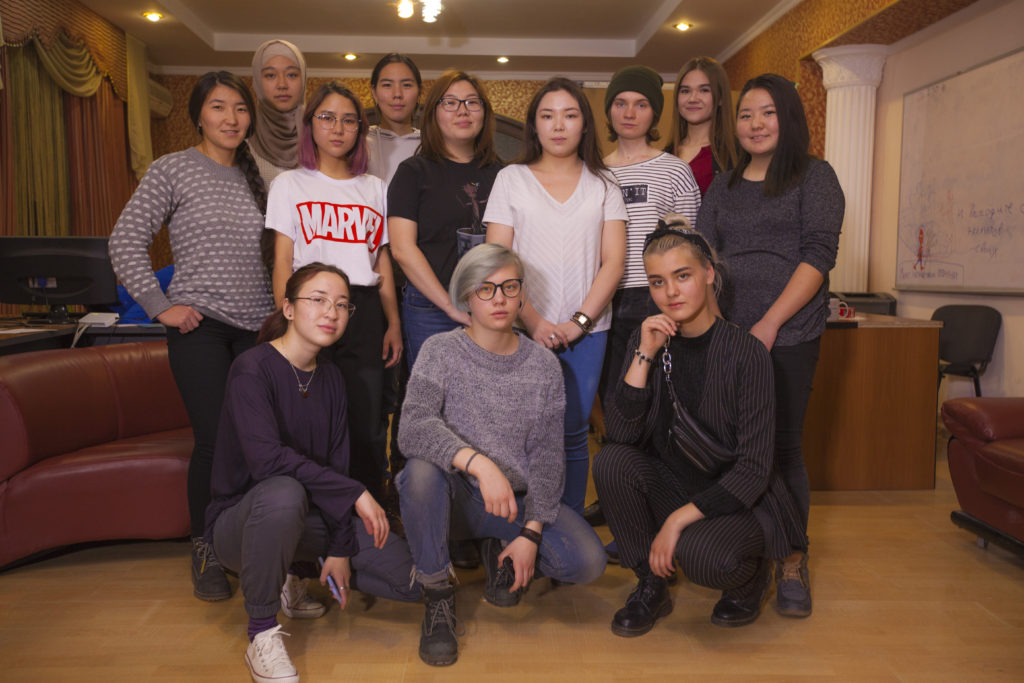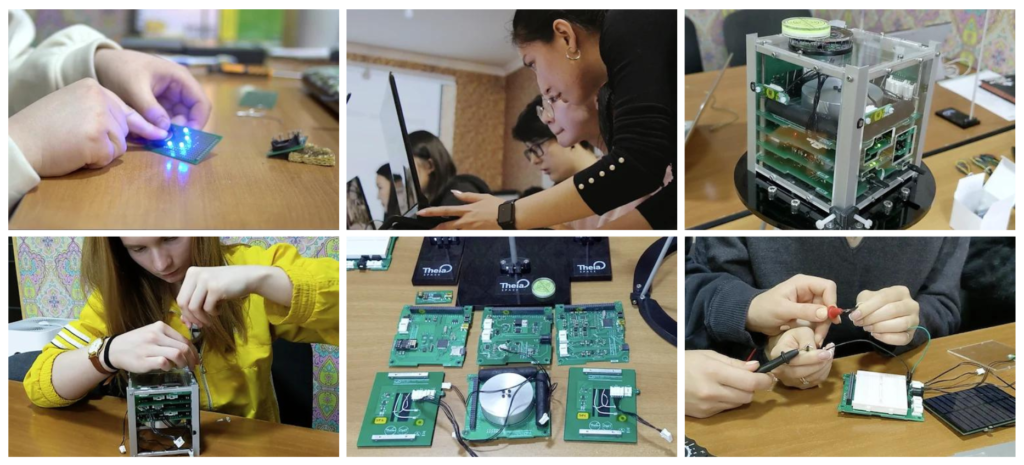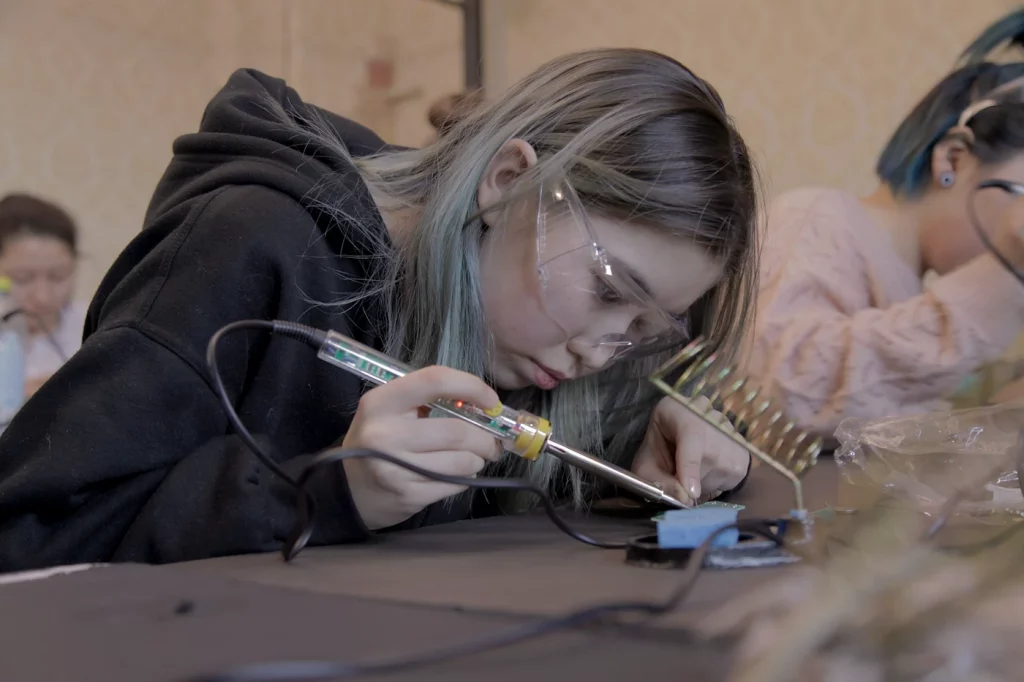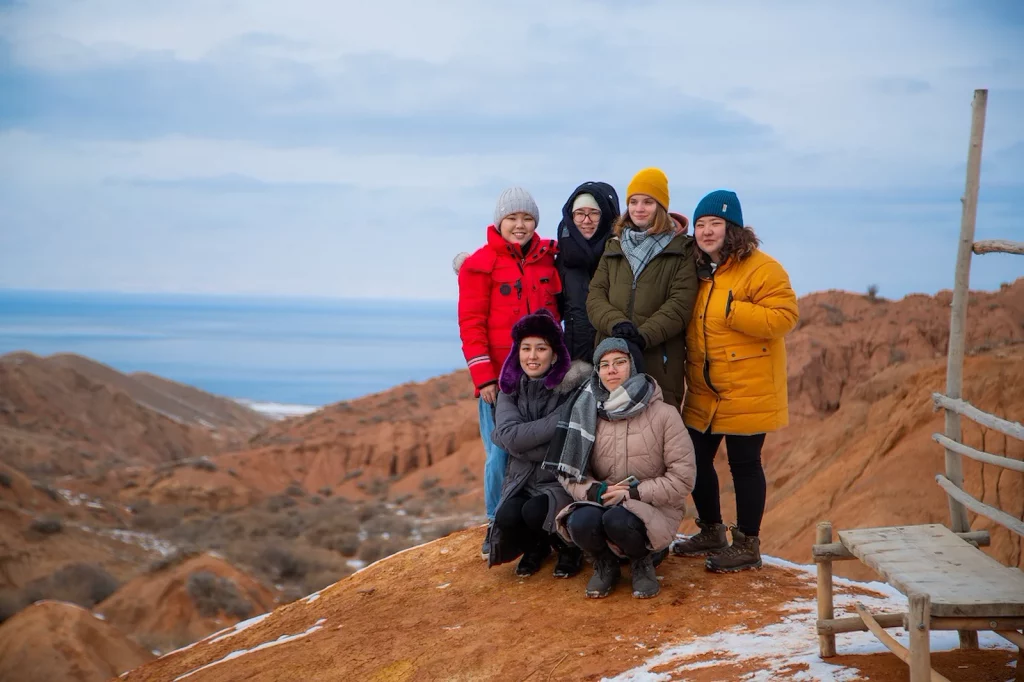By Svetla Baeva, Communications Lead, UNDP Europe and Central Asia
To celebrate the International Day of Women and Girls in Science (February 11), we caught up with Kyzzhibek Batyrkanova and Aidana Aidarbekova, two of the seven women powering the Kyrgyz Space Program, to learn more about how it all started and what it means for girls in Kyrgyzstan.

“My personal dream is that the Kyrgyz Space Program will grow up to be the National Space Agency, like the official one,” says Aidana Aidarbekova, a 23-year-old deputy director at the initiative.
The all-woman Kyrgyz Space Program is set on launching Kyrgyzstan’s first satellite into space one bolt and piece of code at a time. But in a country where gender stereotypes abound, their ultimate goal is to spark the interest of girls and women across Kyrgyzstan and the region in science, technology, engineering, and mathematics (STEM).
“We want to get kids in our country to start dreaming again of becoming astronauts or space engineers. When I was growing up, I never dreamt about that because I never saw anyone in this field,” explains Aidana. Her own interest was piqued after seeing a picture of her sister soldering. “I didn’t know people like her could do that!”
One giant leap for womankind
The Kyrgyz Space Program was initially launched by the Kloop Media Foundation, a media outlet known for its human rights-centered reporting. A fortunate encounter between Bektour Iskender, Kloop’s co-founder, and Alex MacDonald, currently the Chief Economist at NASA, at a TED conference ignited the satellite-building program’s first open call for girls and women.
Peer-to-peer workshops got the space pioneers hooked. “We all applied and completed our basic engineering courses, which we then developed into a more systemic educational program,” explains Kyzzhibek Batyrkanova, 28-year-old program director.
The Kyrgyz Space Program as we know it today was born.

Now working out of a small office in Bishkek, the seven women strong team is hard at work building a nanosatellite to send into space. Their hard-earned skills—from coding satellite boards to installing sensors and assembling the components—are put to the test. Sometimes errors arise, and their work comes to a standstill as they look for ways to solve the problem.
“At the very beginning it was very hard because we lacked the knowledge we needed and didn’t know who we could connect with or who to ask for help because in Kyrgyzstan we don’t have such specialists,” notes Kyzzhibek.

But their mentors keep them going—women like Dr. Asel Sartbaeva, a Kyrgyz born chemistry professor and scientist at the University of Bath, Zainab Saleem, a space engineer working on groundbreaking satellite technology, and Dr. Camille Wardrop Alleyne, an aerospace engineer and space scientist at NASA, have helped them to push their own frontiers.
Disrupting gender norms in STEM
Women in Kyrgyzstan are disproportionately affected by poverty and are worst hit by the lack of employment opportunities, coupled with a widening gender wage gap.
In a world that is becoming more automated and dependent on technology across all fields and disciplines, having basic technology skills is now an expectation for almost every possible career choice. To this end, the Kyrgyz Space Program organizes regular training courses in basic engineering, which include everything from programming and 3D modeling to soldering. They’ve already had over 100 graduates—girls and women—who completed the STEM and satellite-building course.

“In the trainings that we conducted before COVID-19, I would say that 50% of the women were below 25 years old, and the other half were older. I think we even had some school teachers,” said Kyzzhibek.
This doesn’t come as a surprise as the employment gap in Kyrgyzstan is particularly significant for women aged 20–34, who are most likely to leave formal employment to care for young children and infants.
But while girls and women significantly outnumber boys in high school and university, gender stereotypes affect their enrollment in technical and vocational education, and many opt for non-STEM subjects in university.
“The main challenge for girls and women is to be aware of STEM in general. I think nowadays it’s improving, but in the provinces, people still don’t have a lot of information about emerging jobs. So I think it’s very challenging for them to even choose a specific career or educational path,” further explains Kyzzhibek.

“A lot of people still think that some areas are not designed for girls. That it’s for boys only. I think these biases are pretty unconscious,” chimes in Aidana. “People still believe in stereotypes like that girls shouldn’t go into STEM, and that girls are just supposed to be housewives.”
“I faced it in my school years…the girls and boys were getting different kinds of opportunities. I remember asking our head teacher, ‘Why can’t we also get all these opportunities as the guys?’ He said, ‘Oh come on girls, you’re going to end up being housewives.’ I remember feeling so offended at that moment.”
These cultural perceptions, combined with the financial pressure for additional family income, makes women choose vocations, which allow them to combine work with childbirth, childcare and housework. Changing this paradigm means getting everyone on board.
“It’s important that men support these types of initiatives because men possess a lot of economic and political resources that could boost girls’ confidence and opportunities,” Kyzzhibek points out.
That’s why initiatives like the Kyrgyz Space Program are ever more important. A strong foundation in STEM provides girls with a unique skill set that builds their ability to be creative problem solvers, useful for any field of work. Girls gain access to a broader range of careers with better economic outcomes, learn to think critically about data and information, and enable them to use technology not only as a consumer but to instigate innovative advancements.
A boost for gender equality
With the onset of the COVID-19 pandemic, the team turned to online learning to keep the programme running and expand it to girls and women across the country. At the beginning of 2022, they were accepted to the Women Innovators edition of UNDP’s BOOST regional acceleration programme for social impact innovation, to do just that.
“I think it really helped us to see what our goals are and what we should be aiming for in the future,” notes Kyzzhibek. “Plus, it was just such a great experience to meet so many women working on their innovations.”

They received a grant to develop a pilot online educational programme in space engineering for beginners and expand their community of space enthusiasts. The programme will introduce participants to different types of satellites, the space environment, satellite specifications for survival in space, and how to manage and create space missions. If interested, participants will then be able to continue with tactical training on-site, and eventually join the team and become trainers themselves.
“If girls and young women can find their community and find the strength to believe in themselves – this is the way forward,” says Kyzzhibek. Because sometimes you have to draw up your own map, charting into new territories.
Kyrgyz Space Program’s all-women team is actively and intentionally working toward disrupting gender norms in STEM and beyond. Having partnered with multiple international organizations such as UNICEF, UN Women, and UNDP, one of their future goals is establishing university partnerships to build a program to lay the foundation for aerospace research and practice in the country.


